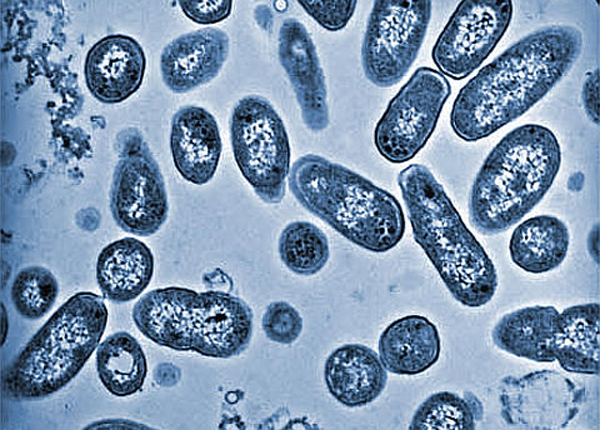Salmonella's Secret: A Chemical That Isn't Only in Corpses

Salmonella has a reputation as a particularly nasty infection. Even antibiotics won't help unless the bacteria have moved from the gut where they typically take hold after the person has eaten contaminated food into the bloodstream.
A new study sheds light on why salmonella is so hard to beat: It thrives on a chemical that, until now, wasn't thought to exist inside people while they were alive.
Scientists at the University of California at Davis solved the puzzle after wondering how salmonella could outgrow beneficial microbes in "the hostile environment of the inflamed gut," explained the authors of the report appearing tomorrow (Sept. 23) in the journal Nature.
Some bacteria are able to grow slowly in a low-oxygen environment like your intestines by making energy through a process called fermentation. Salmonella uses a different process to make energy, called respiration, which normally depends on oxygen.
But scientists have long known that salmonella can use a chemical called tetrathionate as a substitute for oxygen when no oxygen is around, said study researcher Andreas Baumler, professor of medical microbiology and immunology at the UC Davis School of Medicine. Researchers have been using tetrathionate since 1923 to help grow salmonella in laboratories.
In nature, tetrathionate is found in decaying corpses.
"We were the first to look for it [tetrathionate] in vivo and find it," Bäumler said.
Sign up for the Live Science daily newsletter now
Get the world’s most fascinating discoveries delivered straight to your inbox.
In fact, salmonella not only use tetrathionate in the host's body, the bacteria also trigger the host's immune system to create more tetrathionate, which is a byproduct of inflammation in the intestine.
How Salmonella take hold
A salmonella infection begins when a person ingests the bacteria. If salmonella survives stomach acid and the small intestine, the bacteria then have to compete with the billions of microbes that live in a healthy gut.
Bäumler said the "cunning trick" starts when a few salmonella microbes attack the intestinal tissue, triggering inflammation. Those first salmonella bacteria to attack die, but the body then produces enough tetrathionate in response to start feeding the surviving salmonella.
The researchers designed an experiment to determine whether tetrathionate gives salmonella an advantage over the beneficial bacteria that grow slowly in the gut through fermentation.
The researchers said they infected mice with two strains of Salmonella enteric one "wild" strain that could grow with tetrathionate in low-oxygen environments, and a mutated strain that couldn't use tetrathionate.
Four days after infection, the wild salmonella had outgrown the mutated strain 80 times over.
"The human body normally has 10 times more microbes than human cells that help protect us against infection from disease-causing bacteria," Bäumler said. Salmonella, however, quickly outgrows them and takes over.
It's no wonder that the pathogen needed a trick to out-grow the healthy bacteria living in the gut, said Vincent B. Young, an associate professor in infectious disease at the University of Michigan.
Young said while this study tells us something about salmonella, it also could lead to new research into how the intestine and intestinal bacteria function.
"We always used to think about the billions and billions of microbes in the gut as freeloaders and we tolerated them," Young said. "Now we're finding out more and more that they're beneficial to us."
Salmonella infections a common problem
Salmonella is spread through contact with feces, and humans become infected most frequently through contaminated water or food sources such as poultry, meat and eggs, according to the Mayo Clinic.
"Salmonella is an enormous problem there are about 2.5 million cases a year that are documented," said Dr. Robert Orenstein, an associate professor of medicine in the division of infectious diseases at the Mayo Clinic in Scottsdale, Ariz.
Orenstein said many people with salmonella suffer an uncomfortable bout of diarrhea before overcoming the infection on their own. An estimated 95 percent of people in the United States with the disease don't seek medical attention. However, for people with weak immune systems, salmonella can be a serious problem.
"You can get salmonella infection anywhere once it gets into the bloodstream it can get into the bone. You can get arthritis from salmonella," said Orenstein.
People with salmonella typically develop diarrhea, fever and abdominal cramps within 72 hours of infection. The authors noted that salmonella takes advantage of the body's immune system a second time. While the body attempts to rid itself of salmonella through diarrhea , the bacteria are more easily transmitted to the next host.
"There are probably other bacteria functioning in a similar way. But they must have found new tricks," Bäumler said. "They don't use tetrathionate."










